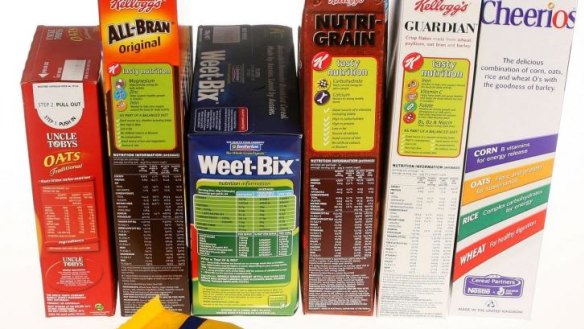A guide to understanding the nutritional label

While we may be struggling to work out where our food comes from, working out what's in it can be even more perplexing. On the back of each pack of food or drink, with a few exceptions, should be a nutrition panel outlining the amount of energy, protein, fat, saturated fat, sugars and sodium in the food. These are displayed as both amount per serving size and amount per of 100g.
To help make sense of this table of numbers we spoke with leading nutritionist Catherine Saxelby from foodwatch.com.au.
"The trouble with nutrition panels is that people just can't read them," she says.
First up on the nutrition panel are the kilojoules. "This is a large stumbling block because of the confusion between kilojoules and calories," says Saxelby. Much diet literature we read comes from America where energy is described in calories. There are 4.18 kilojoules to a calorie. The average Australian eats 8700 kilojoules a day which is equivalent to 2,000 calories. "But a very active 16-year-old, for example, requires 12,000kJ a day, which is 4,000kJ more than a sedentary 70-year-old," says Saxelby.
The amount of energy is listed in kilojoules, firstly, by serving size. "Sometimes they [serving sizes] are simply quite stupid," says Saxelby.
We purchased several brands of breakfast cereal as an example and weighed out the suggested 25g serving size. These were scant serves and dwarf in comparison to what would be served at any Australian breakfast table. By having small suggested serving sizes manufacturers can print lower kilojoule totals. The inverse can be true when manufacturers want to highlight a positive attribute such as fibre. They will increase the serving size so they can boast 'more fibre per serve' on the front of the pack.
As serving sizes vary sometimes, many find it easier to understand the column on the right hand side of the panel which reveals the amount of nutrition per 100g. So if a product has 38g of sugar per 100g then this means it contains 38 per cent sugar as in Kellog's Fruit Loops. Uncle Tobys Weeties, by comparison, contain just 0.4g of sugar per 100g or 0.4 per cent.
There are no specific numbers given by governments apart from general advice to eat less sugar and sugary foods. But most dietitians agree that 10 per cent of your kilojoules or less is a wise number to aim for. This translates to 50 grams or 12 teaspoons of added sugar a day.
When it comes to salt the maximum recommended amount is around 6g or 6000mg a day. This is just over a teaspoon. The nutrition panels on food list not salt but sodium. For every 10g of salt, or sodium chloride, there is about 4g of sodium and 6g of chlorine. "The recommended 'sodium' intake is around 2000mg a day, but lower at 1600 if you have high blood pressure" says Saxelby. She recommends people should look for staple foods that list 400 milligrams of sodium or less on the nutrition panel.
However there are products that are very salty such as soy sauce which contain around 6500 milligrams of sodium per 100 millilitres. Even a "lower salt" soy sauce will still contain around 4000mg of sodium per 100ml. Also be on the lookout for "less salt" claims. We bought potato crisps that made a "less salt' claim compared to the brand's regular crisps and still contained a whopping 800mg of sodium per 100g.
Finally Saxelby warns: "Don't eat too much food from packets. They mostly contain highly processed food. We should be eating 80 per cent fresh food," she says. "If your diet contains a lot of packaged food then you should take a long hard look at what you are eating."
She suggests to look for the overall number of additives (listed as 'E' numbers in Europe), as in 621, better known as MSG. The fewer additives the better.
Restaurant reviews, news and the hottest openings served to your inbox.
Sign up- More:
- Restaurant news
